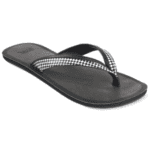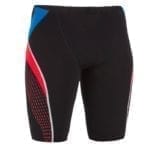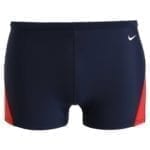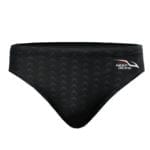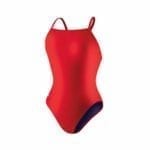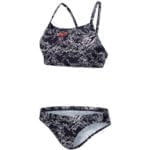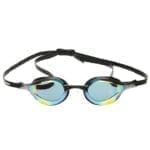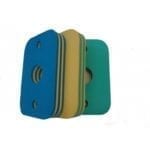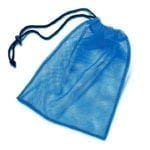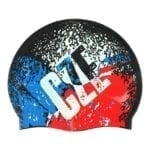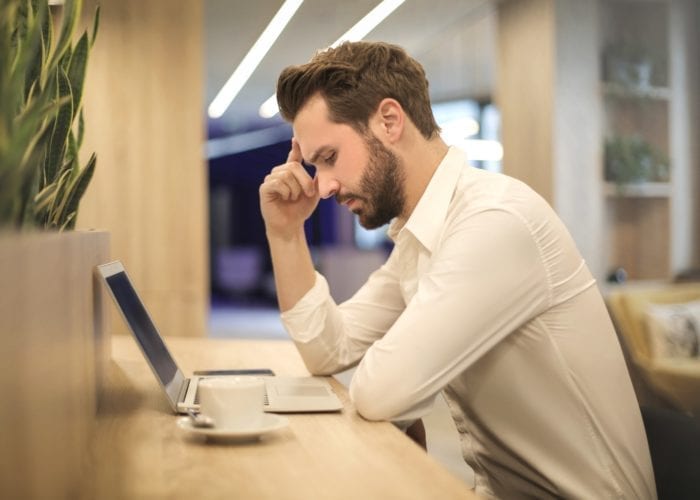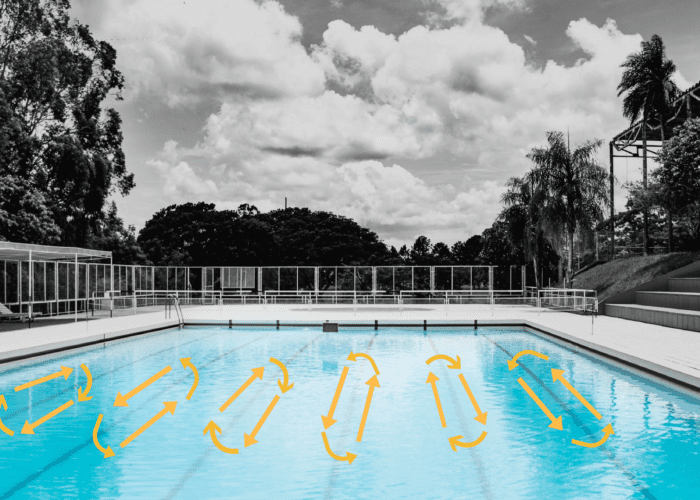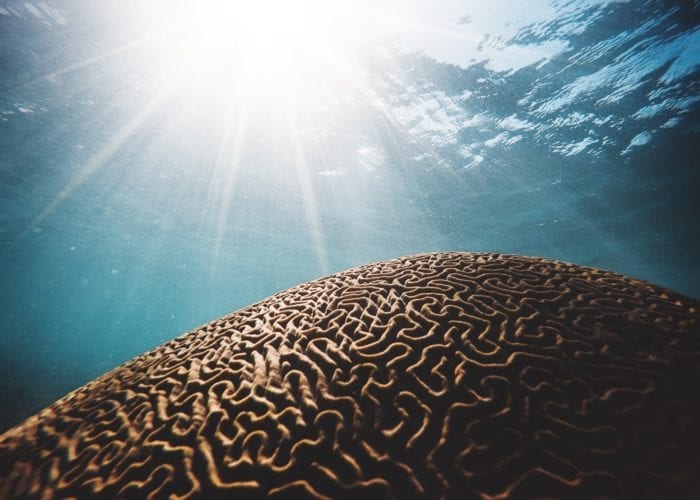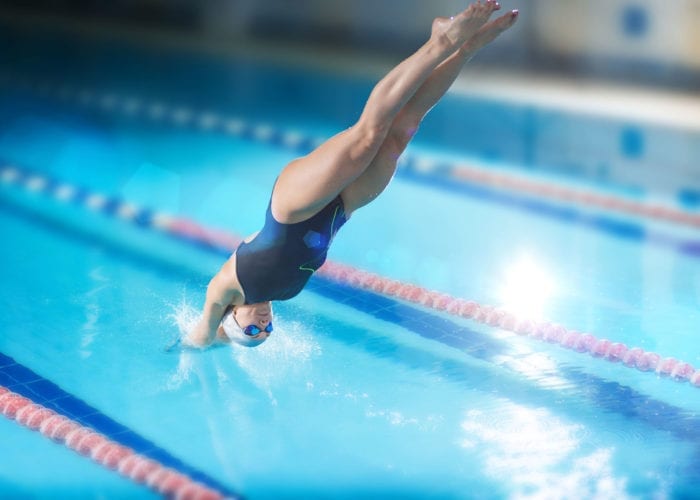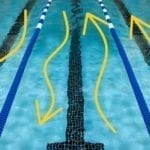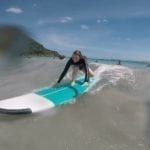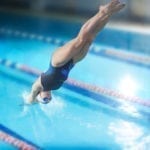Investing in the right equipment at the beginning is useful and can save you a lot of frustration with running glasses, a high resistance of your loose boardshorts or hair in the face. In this article, we’ll go through everything that a beginner swimmer should have. At the end of the article, I also include links to stores where you can buy the equipment.
Basic equipment
1. Slippers and hygiene
Do not underestimate hygienic habits and buy some slippers or flip-flops. Your feet and other people’s will appreciate it too. A lot of people are moving around the pool, and the conditions for the spread of bacteria and dirt are in a humid environment pretty high. Additionally, without slippers, you can slip on the wet floor, that is another reason why you should buy them. And do not forget towel and hygiene. Check out the article about pool behaviour here.
2. Suitable swimsuits
Men
Get a proper swimsuit. Nowadays, perhaps the most common choice is so-called jammers – with legs just above the knee. They will not create resistance in the water and are also very comfortable. You can also choose other cuts, such as briefs (old-school classic) and trunks – or better to say boxers. Choose the appropriate size so the swimsuits are not loose or too tight. If possible try it on.
Unsuitable swimsuits are any boardshorts-like that have pockets and are rather lifestyle shorts to the beach. These swimsuits put a lot of resistance and swimming with them is more difficult because the fabric soaks up more water and it’s heavy and at the same time the pockets take up the water and will be slowing you down. Beginners do not have resistance training on the program.
Women
Dear women, bikinis are for the beach and are not adapted to swimming training or teaching. You’d better get a more sporty one-piece swimsuit. There are also two-piece swimsuits that are reinforced in the breast area and therefore suitable for training and swimming lessons.
Women’s swimsuits have countless cuts in both hips and backs. In this case, you can choose entirely according to your taste and comfort. Try different cuts and choose the most comfortable for you. You can go fashionably and choose from different palettes of colours and designs.
3. Swimming goggles
By purchasing the swimming goggles you will make clear to others that you are not going to swim like Ms Radová (so-called lady, who swim slowly with head above the water). Invest in them. Make sure it sits well on your face and seals perfectly. When you trying your goggles, it should always hold on your face without a rubber strap. Prefer middle and higher price categories.
If you swim in a chlorinated pool, expect to have your goggles replaced in a few months because chlorine causes them to degrade.
Swimming goggles are manufactured in different sizes. Competitive swimmers most often use goggles that sit inside eye sockets. You recognise them by very small size and therefore low water resistance. This category also includes shells so-called Swedish – a piece of plastic shaped according to the shape of the eye area. Some elite swimmers still use them. As a former swimmer, I recommend smaller swimming goggles with a silicon seal. I can confirm that this type of glasses sits comfortably on a large majority of people, women and men.
Another type of swimming glasses is sitting outside your eye sockets. Making larger view area where the gasket touching cheekbones and eyebrows. This type of glasses is popular among fitness swimmers and triathletes, but you need to carefully choose the size. You should distinguish models for men and women because of a different shape of the face (men mostly larger than women). Women, therefore, choose to goggle types for women or, in some cases, for children.
And the last category is swimming masks. The swimming mask is almost similar to diving or snorkelling mask, but it lacks a silicone nose cover. Masks are suitable for casual swimmers or children. Children can better deploy their masks themselves on the face, and they function better in their “fun mode”. For adults, I can recommend swim masks only if no other type of goggles fits.
Unfortunately, after some time, the glasses will begin to fog. Manufacturers do what they can to reduce fogging, but even with more expensive glasses, this effect will happen over time.
To keep your glasses longer without fogging, avoid any touching into the glasses from the inner side. There is a special treatment that prevents fogging. If glasses are already fogging, there are still many grandma advice (spit in it, dishwasher, shower gel) or specially designed anti-fog sprays to treat the inside of the glasses. Women, if you have long lashes, expect the anti-fog protection from the inside of your glasses will be removed very soon – unless you do not blink 🙂
And the ultimate advice for beginners is to choose the clear or light-dark (smoke) glass colour.
4. Swimming cap
Here it is very simple if you have long hair, a swimming cap is needed. It is almost always true for women, for men it’s optional. Caps are made of various materials from polyester to silicone. I personally recommend a high-quality silicone cap, or some have a combination of silicone and polyester (Spandex). Pure cloth caps do not hold on to your head so well and also not protecting your hair against chlorine.
5. Kickboard
Get a simple small kickboard. A small board is enough for two reasons. On the one hand, it takes less space in the backpack and on the other hand, it will not displace the body’s swimming position during training. You can opt for a pull-kick board which is the combination of board and pull buoy.
6. Mesh bag
The mesh bag has a standard volume of about 30 litres. You will be able to put all the equipment for swimming, including a towel and hygiene. Swimming mesh bag is an ideal alternative to a classic Czech plastic bag from the supermarket (fill in name of your favourite). On the one hand, you can accidentally pick up a plastic bag of someone else, because there can be several same of them on the pool, and it is a more convenient and professional solution for wearing equipment and items. Or take your backpack, fine, too.
Optional equipment
1. Pull Buoy
The pull buoy is a specially “eight” shaped foam aid. It can be placed between the knees, thighs or ankles. Enables your arms the pull training and lifts your legs. A very good aid to exercise the body rotation too.
2. Nose clip
We always try to learn how to swim without a nose clip. However, if it does not really work without it, buy it after the first hour. At first, it will be more enjoyable for you, but we’ll take the clip off your nose in a while. You will have to learn it without it too.
3. Earplugs
Same as nose clip, earplugs sometimes can help to feel better in the water. If you absolutely can not stand a little water around the ear area, get earplugs. I recommend the conical shape of silicone earplugs, but there are also special plastic earplugs, that can be shaped according to your ear.
4. Short training fins
Easy-to-use tool for better position and swimming speed. In training, they can also be used to strengthen the legs muscles, but they are not necessary, as you have to learn to swim well without them.
5. Training paddles
The paddles are a tool that attaches to the palm and puts a higher resistance in during the active phase of your stroke. We use different types and sizes of paddles. If you would like to buy some, first consult with the coach about the type and size of the paddles.
6. Front snorkel and other aids
Swimming with a front snorkel can sometimes help, but we recommend them only to advanced swimmers, as well as other aids (resisting parachutes and other things making swimming more difficult, special technical equipment, expanders, etc.). These tools will be provided to you during training. You do not have to buy them unless you have high swimming goals.
Where to buy
In Prague, you can choose from several shops that have swimming gear. Personally, I do not recommend large Sportissimo or Intersport chains, where the offer is not rich and the staff is not so specialized to advise you precisely. If you still prefer larger stores, I can recommend Decathlon, where you will choose basic equipment at a favourable price, for beginners it is sufficient.
If you like more specialized stores, here are some tips. In the larger swimming pools (Podoli, Šutka) there are small shops right in the pool area and you can buy some of the equipment directly there. I can recommend Sportex or Triexpert online stores that also have a stone shop where you can try everything. And they should give you some advice too. Ideal.

